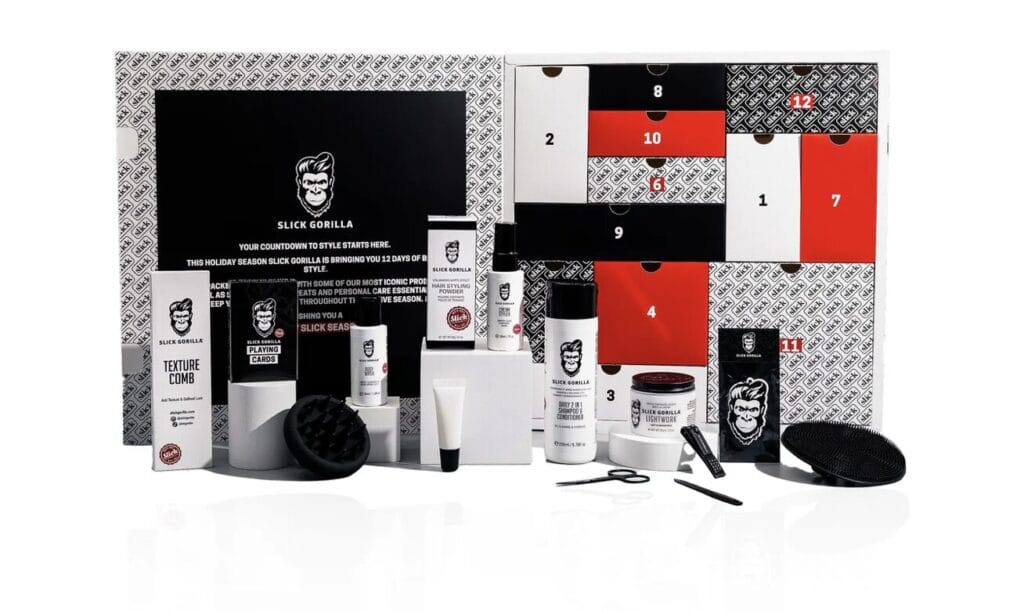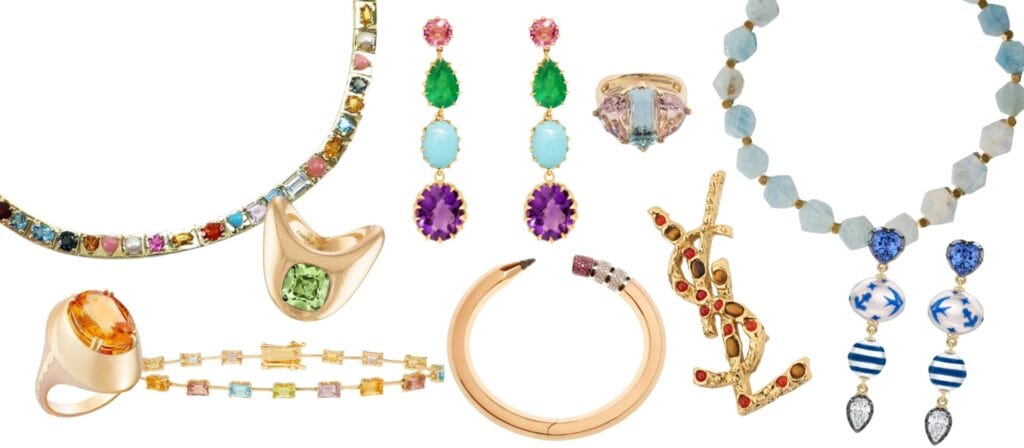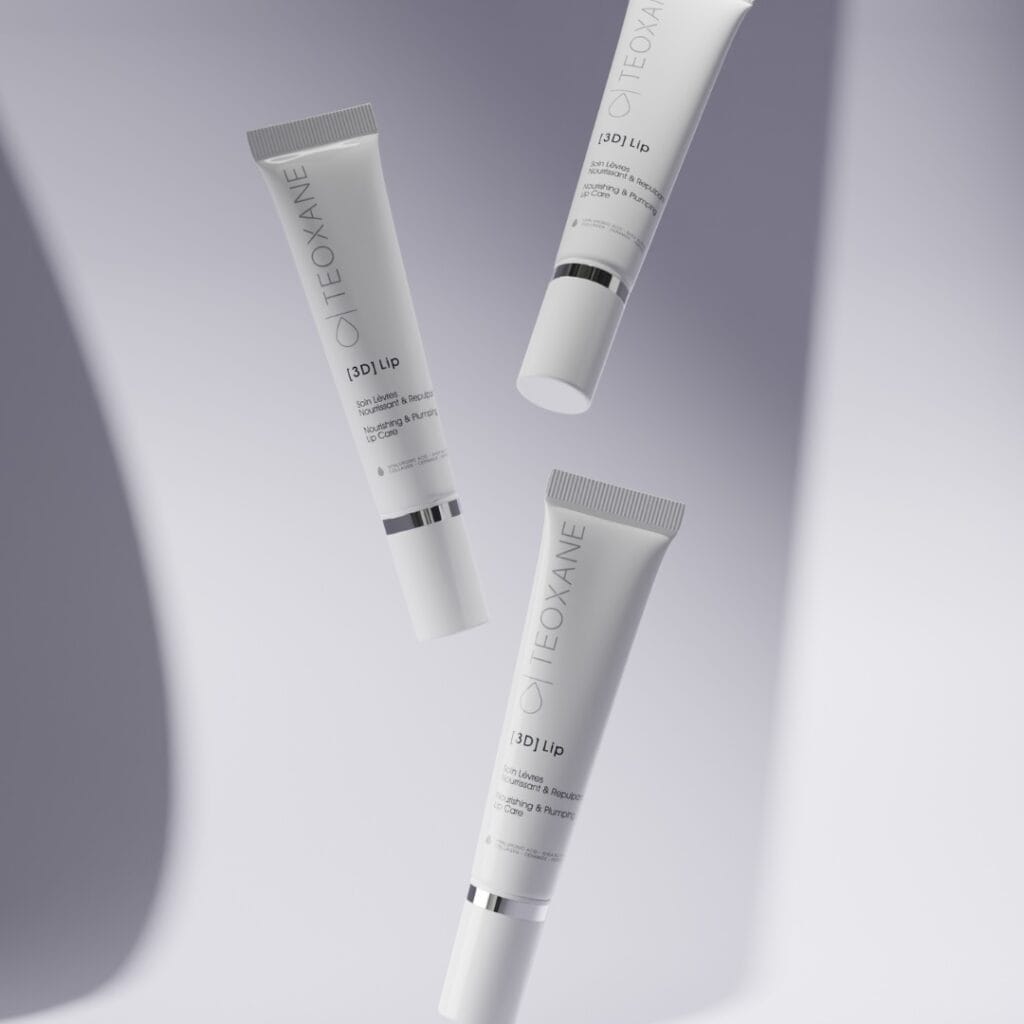Photography: Macrae Marran
From its audacious roots in 1960s New York to today’s digital-first campaigns, Calvin Klein has always played the long game, establishing itself as a pioneer in American fashion. Founded in 1968 by Calvin Klein and Barry Schwartz, the brand quickly captured imaginations with its clean, sleek lines, provocative advertising, and a bold, almost radical approach to minimalism that challenged conventional notions of style at the time. What began as a small coat boutique on Madison Avenue soon evolved into a symbol of modern American fashion, transforming staples like underwear and denim into lifestyle statements. Calvin Klein didn’t just sell clothing — it sold aspiration, attitude, and a new vision of urban sophistication, appealing to a generation hungry for self-expression and cultural relevance.
That transformation accelerated even further after PVH Corp. acquired Calvin Klein in 2003, providing the infrastructure, resources, and global platform to elevate the brand’s reach. Under PVH’s stewardship, Calvin Klein expanded into international markets, strengthened its licensing operations, and unified its various verticals — from underwear and denim to performance wear and high-fashion jeans — under a single, coherent brand vision. This allowed the iconic label to speak with one amplified voice, maintaining its signature minimalism and provocative energy while adapting to a rapidly changing fashion landscape. Today, Calvin Klein continues to balance its heritage with forward-thinking innovation, leveraging digital campaigns, global ambassadors, and a clear understanding of cultural trends to remain as relevant and aspirational as ever.


Reinvention in the Now: The Calvin Klein Menswear You’re Seeing Today
Fast-forward to 2025, and Calvin Klein menswear is confidently riding a new wave — one that fuses heritage with cultural resonance. Under the broader PVH umbrella, CK is refining its identity for an audience that values authenticity, social influence, and digital storytelling as much as fabric quality and cut.
In particular, the denim campaigns are telling. Take Calvin Klein’s recent denim launches featuring Jung Kook of BTS. Jung Kook fronts Fall 2025 denim styles that riff on ’90s silhouettes — the 90s Straight Jean, utility-inspired Carpenter Jean, denim jackets with CK Emblem branding, and even shearling-trim leather pieces as accents.
As Creative Director and Producer, I shaped this editorial with a singular mission: to capture the essence of the Gen Z spirit—that restless energy, fearless independence, and emerging sense of self that defines young men coming into adulthood. I selected celebrity and fashion photographer Macrae Marran to bring this vision to life, knowing his lens could translate rebellion into elegance, spontaneity into art, and attitude into narrative. Every frame is infused with a sense of freedom and possibility, a visual stake in the ground for a generation staking their claim in the world on their own terms.
The editorial celebrates this journey with cool, fun, and enthusiastic energy, but beneath the surface is something very smart—a deliberate exploration of identity, community, and individuality. It draws inspiration from writers like Jack Kerouac, whose work embodied the thrill of the open road, the search for authenticity, and the exhilaration of stepping boldly into the unknown. Just as Kerouac chronicled the restless wanderings of a generation seeking meaning, this editorial translates that ethos into a modern visual language: denim, movement, sunlight, and gesture combine to reflect the confidence, curiosity, and rebellious spirit of the new Gen Z man.


These campaigns illustrate how CK is leaning hard into Gen Z’s sensibilities — global icons (K-Pop stars), nostalgic silhouettes (’90s leg fits), and a visual language that balances rawness with refinement.
The New Gen Z Man — Who He Is, What He Wants, and Why Calvin Klein Speaks His Language
The American man of 2025 is living through a cultural reset. His style has evolved beyond traditional categories — no longer confined to business formal or weekend casual, he’s curating a wardrobe that reflects fluidity, individuality, and purpose. He values quality over quantity, gravitating toward pieces that blend craftsmanship, comfort, and quiet confidence. Functionality drives his choices, but so does self-expression. Denim, leather, and utility-inspired workwear have become his uniform for modern life — elevated essentials that transition seamlessly from city to nature, work to leisure, analog to digital.
“Gen Z men today approach fashion with emotional intelligence and cultural awareness. They want apparel that reflects authenticity, versatility, and a sense of purpose. Calvin Klein resonates with this generation because it combines timeless minimalism with modern relevance—offering pieces that are not only visually confident but also align with Gen Z’s values of individuality, comfort, and conscious design.”
— Joseph DeAcetis, Editor at StyleLujo.com and Menswear Professor at the Fashion Institute of Technology
What defines him most, however, is mindset. The American man today is globally aware yet locally grounded. He cares about sustainability and social responsibility but insists that style must still feel aspirational. He’s tech-savvy, health-conscious, and visually literate — absorbing trends from TikTok, runway feeds, and street style with equal ease. And though nostalgia shapes his taste — with nods to the minimalism of the ’90s and early 2000s — his fashion lens is forward-thinking. In 2025, the American man’s style story is one of reconnection: to heritage, to authenticity, and to the raw simplicity of what it means to look — and live — like himself.

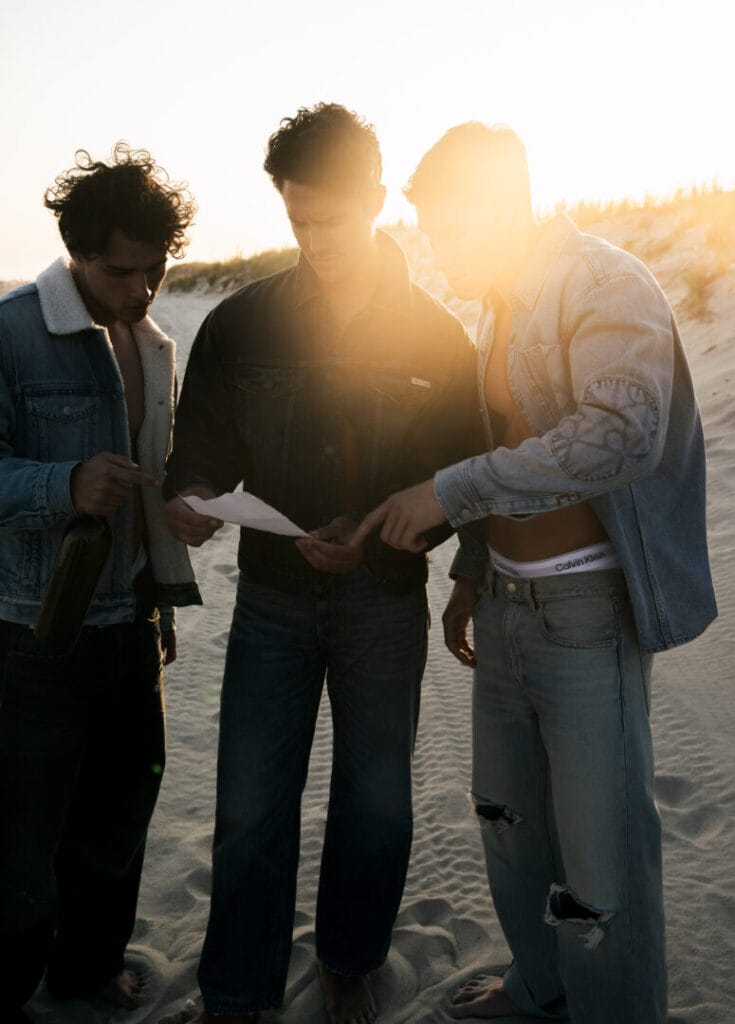
He is digitally native. He consumes fashion not just as function, but as identity. He doesn’t shy away from logos — he wants symbols that carry meaning: cultural relevance, social currency, a heritage wink.
For him, denim isn’t just fabric on legs. It’s a cultural artifact. He grew up on social media, on music videos, on fashion that intersects with music, activism, and lifestyle. He admires authenticity. He gravitates toward brands that offer transparency (in materials, sustainability, legacy) and consistency (in messaging, aesthetic, values).
CK’s jeans and leather tops in the current campaigns feel built for this man: well-cut yet relaxed, visibly branded without screaming excess, and grounded in heritage while pushing forward. The “CK Emblem” monogram and the revival of signature fits (like the Carpenter jean or the 90s Straight) nod at nostalgia — but updated washes, sustainable treatments, and modern cuts keep it fresh.
When you see three Gen Z models aligned with nature in a campaign — outdoorsy light, rugged texture, unforced poses — it’s part of a new narrative. These men are not just wearing denim, they move in it. The images reflect values that matter to Gen Z: freedom, environmental awareness (even if subtly evoked), natural light instead of harsh studio flash, authenticity instead of over-polished gloss. It’s Calvin Klein saying: this is who we see you as.
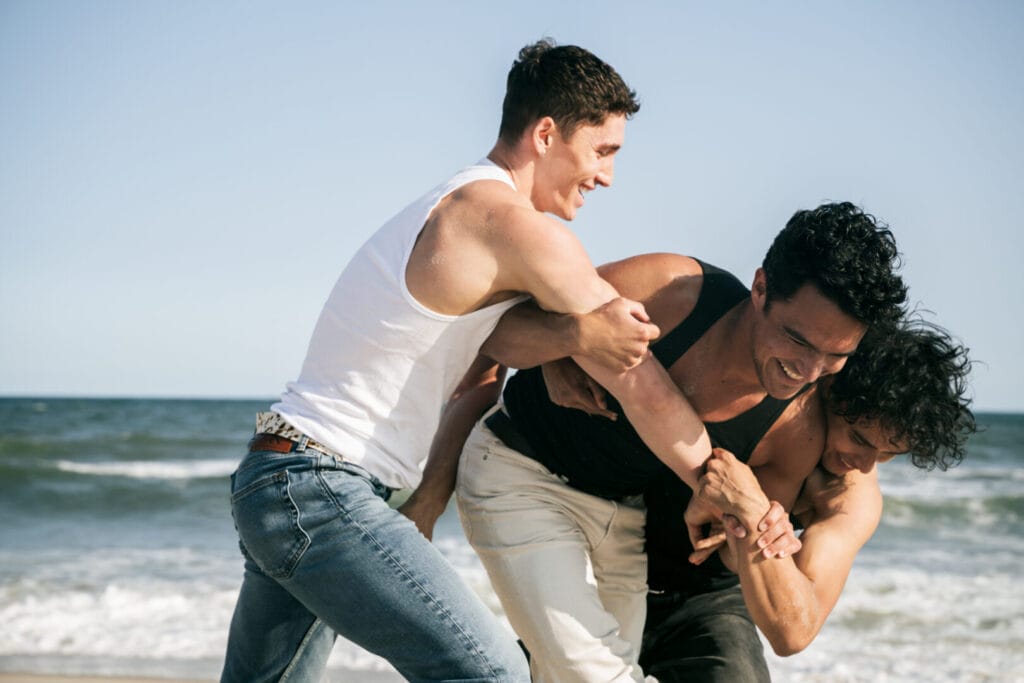
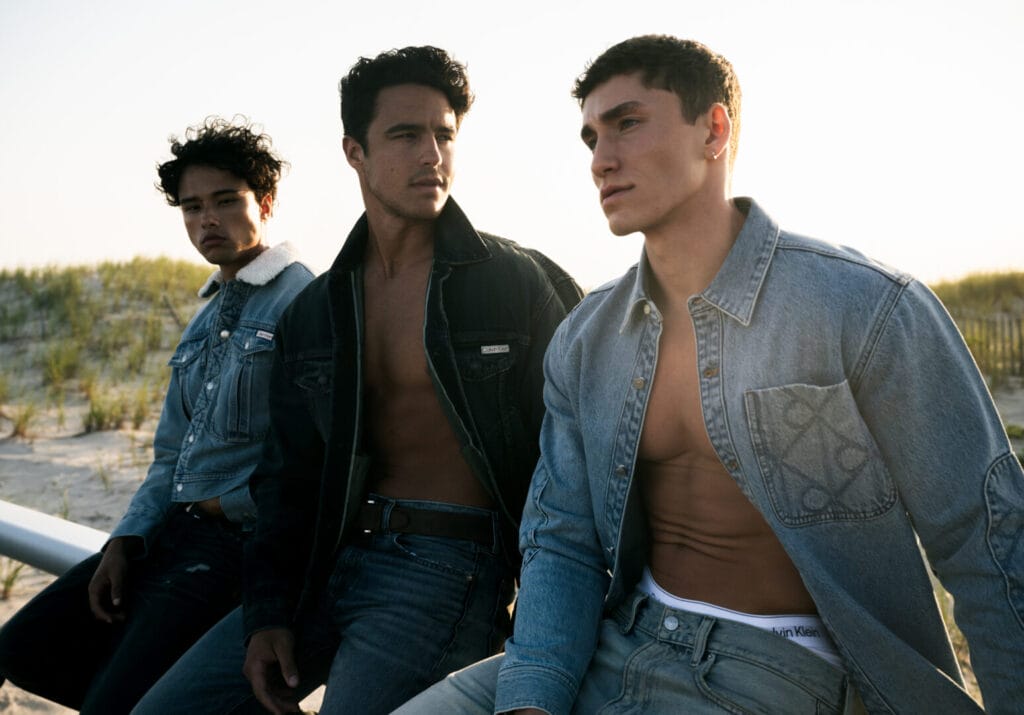
And for that reason, among Gen Z men, CK isn’t just heritage label — it’s a platform. It’s permission to embrace confidence, minimalism, cultural cues (K-Pop icons, digital-first visuals), while still wearing pieces made to last.
Focus on the Details: Denim & Leather, Cut & Texture
Denim
- Signature Fits: The Carpenter Jean, 90s Straight Jean, Slim & Taper models are back — each reworked with updated washes, stretch blends, higher-quality denim fabrics, and sometimes graphic detailing like contrast stitching or monogram prints.
- Monogram Treatments: CK Emblem print is appearing as all-over graphics on jackets and jeans, reinterpreting the brand’s iconic logo into wearable pattern.
- Technology & Comfort: Newer pieces incorporate stretch formulations and finishes meant to feel premium while keeping movement easy. (For example, earlier Icon Cotton Stretch lines were rolled out; current versions continue refining comfort.)


Leather & Tops
- Leather trim & accents: In some denim-centric campaigns, detachable or layered leather jackets (e.g. shearling-trimmed leather jackets paired with denim looks) add edge.
- Leather as Statement Layer: Rather than heavy-duty biker style, CK leather tops often behave as elevated outer layers — minimalist cuts, clean tailoring, subtle hardware — echoing the main denim pieces in texture and tone.
- Tops & Layers: Paired with droptail tees, logo sweaters or minimalist knitwear, CK builds its menswear story around layering. These top pieces are balanced so they don’t overshadow the jeans but complement modern masculine styling.
Styling & Imagery
- Nature & Movement: The campaign’s visual language often uses natural settings or daylight tonalities — sunlight through trees or soft outdoor backdrops — to counterbalance the graphic punch of logos. The result is editorial yet approachable.
- Models as Proxies: The choice of presenting Gen Z men (diverse, socially aware, digitally fluent) in casual but intentional poses reinforces CK’s effort to modernize its voice without sacrificing its roots. The aesthetic is less about “runway drama” and more about quiet confidence.

Looking Ahead — Where Calvin Klein Menswear Is Going
Under PVH, Calvin Klein shows every sign of doubling down on what works: global cultural relevance, elevated essentials, and campaigns that resonate far beyond billboards. Expect to see:
- Deeper collaborations with global icons (musicians, digital influencers, sports figures) to embody the Calvin Klein ethos.
- Continual reimagining of classic silhouettes — the ’90s Carpenter, Straight cuts, denim jackets — with sustainable fabrics, tech-enhanced comfort, and updated fits.
- Expanded storytelling through campaign imagery that bridges minimalism with lived experience: movement, travel, activism-adjacent awareness, and authenticity.
- Stronger alignment with Gen Z values — sustainability, inclusivity, gender fluidity, and transparency — even within the traditionally structured realm of menswear essentials.
In short: Calvin Klein menswear isn’t resting on its history. It’s reinterpreting it through the lens of Gen Z’s worldview — clean lines, confident movement, logo with meaning, and garments that carry a cultural beat.
Save Article


